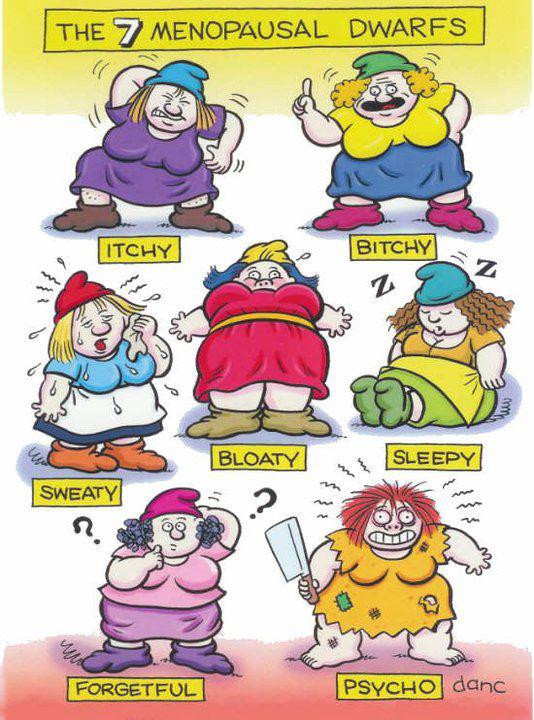Mid-life doesn’t have to be a crisis. In fact, getting older often means getting wiser.
Try the following natural remedies and herbs for menopause:
- Soy foods. The isoflavones in soy foods help balance hormone levels and have some estrogenic activity. There is ongoing research about the safety and efficacy of isolated soy isoflavone supplements. While the initial results look promising, we currently recommend using natural soy foods rather than supplements. Choose from tofu, soy milk, roasted soy nuts or tempeh.
- Flaxseed. Substances called lignins in flaxseed are important modulators of hormone metabolism. Grind flaxseed daily in a coffee grinder at home and use 1 to 2 tablespoons a day.
- Dong quai. Dong quai (Angelica sinensis) is known both in China and the West for its ability to support and maintain the natural balance of female hormones. It does not have estrogenic activity. This is one of the herbs for menopause that should not be taken if a woman is experiencing heavy bleeding.
- Black cohosh (Cumicifuga racemosa). One of the best-studied traditional herbs for menopause, black cohosh is used to help alleviate some symptoms of menopause, including hot flashes. Black cohosh seems to work by supporting and maintaining hormonal levels, which may lessen the severity of hot flashes. Many women report that the herb works well but it isn’t effective for everyone. While any therapy that influences hormonal actions should be a concern, black cohosh does not appear to have estrogenic activity and thus may be safe for women with a personal or family history of breast cancer.
- Vitamin E. A daily dose of 400 IUs of natural vitamin E (as mixed tocopherols and tocotrienols) can help alleviate symptoms of hot flashes in some menopausal women.
- B vitamins. This group of water-soluble vitamins may help women deal with the stress of menopausal symptoms.
- Evening primrose oil or black currant oil. These are sources of gamma-linolenic acid (GLA), an essential fatty acid that can help influence prostaglandin synthesis and help moderate menopausal symptoms.
Source: Dr Weil
Acupuncture
Many women find relief from their menopause symptoms through acupuncture. Skeptics argue that acupuncture benefits are purely the result of the placebo effect, but doctors confirm that acupuncture is a reasonable alternative to hormone therapy for women suffering from menopausal depression and hot flashes.
St. John’s Wort
Among the most popular herbs used in the United States, St. John’s wort has long been an alternative treatment for menopausal mood swings, improved sleep, relaxation, and reduced depression and anxiety. Derived from a wild flowering plant called Hypericum perforatum, the leaves and flowers are harvested and dried. They can then be brewed in a tea or taken in a pill or liquid form. Make sure to ask your doctor before you begin taking St. John’s wort, as it might interact with other medications. Scientific studies affirm that while St. John’s wort is effective for treating mild depression, it works no better than a placebo for treating severe depression.
Ginseng
Ginseng is an herb used for its therapeutic health benefits for as many as 5,000 years by the Chinese, Koreans, and Native Americans. It may be used to treat menopausal symptoms of fatigue, anxiety, and stress because it’s considered a “normalizer” and an “energizer.” You can take ginseng in different forms including tea, powder, and extract.
Yoga
Continual evidence supports the notion that yoga can help relieve irritability and depression brought on by menopause. Women report that yoga relaxation and stretching techniques help stabilize their moods while improving their overall well being.
Try a gentle yoga class once or twice a week to get the most benefits. Once you learn the basics, you can carve out some personal time to practice in the comfort of your own home.
Source: Healthline
Phytoestrogens
Isoflavones are chemical compounds found in soy and other plants (such as chick peas and lentils) that are phytoestrogens, or plant-derived estrogens. Red clover is another source of isoflavones that has been used by some women in an attempt to relieve hot flashes. Isoflavones have a chemical structure that is similar to the estrogens naturally produced by the body, but their effectiveness as an estrogen has been estimated to be much lower than true estrogens.
Some studies have shown that these compounds may help relieve hot flashes and other symptoms of menopause. In particular, women who have had breast cancer and do not want to take hormone therapy (HT) with estrogen sometimes use soy products for relief of menopausal symptoms. However, some phytoestrogens can actually have anti-estrogenic properties in certain situations, and the overall risks of these preparations have not yet been determined. There is some concern because of the fact that these products are selective estrogen receptor modulators (SERMs), that phytoestrogens may stimulate breast cancer growth or limit the antitumor effects of tamoxifen (Nolvadex). Data are conflicting in this regard, and it is important for women to understand that the long-term risks and potential effects of phytoestrogens have not been fully characterized. For example, researchers have shown that long-term use of phytoestrogens in postmenopausal women led to an increase in endometrial hyperplasia (overgrowth of the tissues lining the uterus) which can be a precursor to cancer.
There is a perception among many women that plant estrogens are “natural” remedies and therefore safer than HT, but their safety has never been proven scientifically. Further research is needed to fully characterize the safety and potential risks of phytoestrogens.

